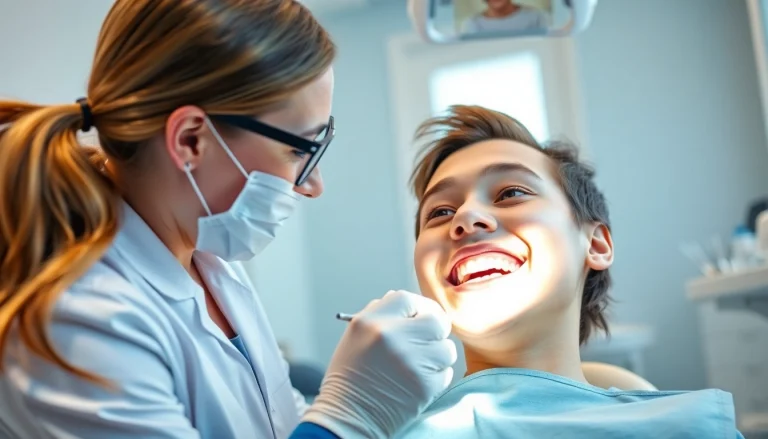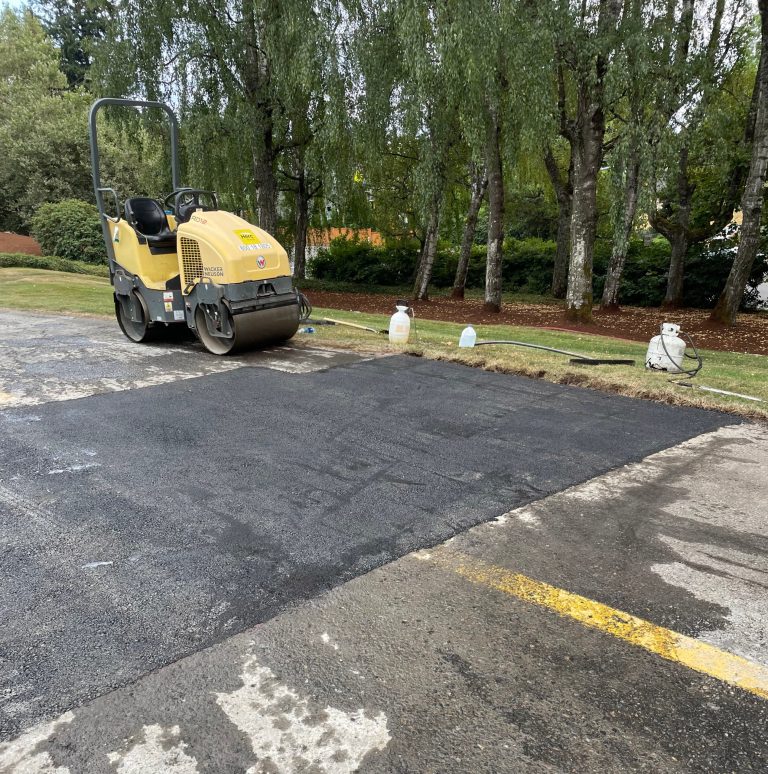
Understanding Orthodontics in Myrtle Beach
When it comes to achieving a confident, healthy smile, few professionals wield as much influence as an orthodontist Myrtle Beach. Specializing in the diagnosis, prevention, and treatment of dental and facial irregularities, orthodontists help people of all ages improve their oral health and aesthetics. This article delves into the world of orthodontics in Myrtle Beach, exploring what orthodontists do, the importance of treatment at various life stages, and the common methods available to create that perfect smile.
What Does an Orthodontist Do?
An orthodontist is a dental specialist who focuses on diagnosing, preventing, and treating misalignments and irregularities of the teeth and jaws. These professionals typically complete additional years of education beyond dental school, gaining expertise in various areas such as braces, retainers, and other corrective devices.
Orthodontists assess the positioning of the teeth and jaw structures using advanced techniques such as digital imaging and 3D modeling. They develop individualized treatment plans tailored to the unique dental needs of each patient, which may include:
- Fitting braces to align teeth
- Utilizing clear aligners for discreet correction
- Creating retainers to maintain post-treatment alignment
- Providing guidance on the safest practices for oral hygiene during treatment
Importance of Orthodontics for All Ages
Orthodontics is often viewed as a service primarily for children and teens, yet it is equally important for adults. The American Association of Orthodontists indicates that approximately 20% of orthodontic patients are adults. This growing demographic reveals an increasing awareness of the value of orthodontic treatment and its long-term benefits.
There are several reasons why orthodontic treatment is beneficial at various life stages:
- Children and Teens: Early detection and treatment of misalignments can lead to improved oral health, fewer dental issues in the future, and enhanced self-esteem during pivotal developmental years.
- Young Adults: This is a time for establishing long-term habits; orthodontic treatment can correct any untreated issues from childhood.
- Adults: For adults who have spent years feeling self-conscious about their smiles, modern orthodontic technology such as clear aligners allows for discreet treatment options without the need for traditional braces.
Common Orthodontic Treatments Available
Orthodontists offer a variety of treatment methods, the most common of which include:
- Traditional Metal Braces: These are the most widely recognized type of braces, consisting of metal brackets bonded to the teeth and connected by wires.
- Ceramic Braces: Similar in function to metal braces, but designed with tooth-colored materials for less visibility.
- Lingual Braces: Placed on the back side of the teeth, making them virtually invisible from the front.
- Invisalign: A popular alternative to braces, Invisalign uses a series of clear, removable aligners gradually shifting the teeth into place.
- Palatal Expanders: Used primarily in children, this device widens the upper jaw to create more space for teeth and improve alignment.
Choosing the Right Orthodontist Myrtle Beach
Selecting an orthodontist is a crucial decision that can significantly impact the journey toward achieving a beautiful smile. Several key factors should be considered when searching for an orthodontist Myrtle Beach.
Key Factors to Consider When Selecting an Orthodontist
Here are essential aspects to guide your choice:
- Credentials: Ensure the orthodontist is board-certified and has completed extensive training in orthodontics.
- Experience: Look for an orthodontist with a solid track record in treating cases similar to yours.
- Technology: A practice that invests in the latest technology can often provide more effective and comfortable treatment options.
- Environment: Consider the office atmosphere; a welcoming and friendly environment can make the orthodontic experience more enjoyable.
Questions to Ask at Your First Consultation
Your initial consultation is an ideal opportunity to learn more about the orthodontist and their practice. Consider asking the following:
- What treatment options are available for my specific needs?
- What is the estimated duration of my treatment?
- How often will I need to visit for adjustments?
- Are there payment plans or financing options available?
- What measures do you take to ensure patient comfort during procedures?
Patient Reviews and Testimonials Importance
Before making your final decision, researching patient testimonials can provide valuable insights into the orthodontist’s effectiveness and patient care. Online reviews, social media feedback, and word-of-mouth referrals from friends and family can shed light on the quality of service offered.
Look for consistency in positive feedback regarding treatment results, professional behavior, and the overall patient experience.
Innovative Technologies in Orthodontics
The field of orthodontics continues to evolve with technological advancements that enhance treatment efficiency and patient comfort. Understanding these innovations can help prospective patients make informed choices about their orthodontic care.
The Role of Digital Imaging in Treatment Planning
Digital imaging technologies, such as 3D imaging and cone beam computed tomography (CBCT), allow orthodontists to create highly accurate models of a patient’s dental structure. This data aids in developing precise treatment plans, enabling orthodontists to forecast results more effectively and communicate potential outcomes to patients.
Advancements in Braces and Aligners
Modern advancements have revolutionized braces and aligners, enhancing patient experience:
- Self-Ligating Braces: These braces utilize a sliding mechanism to hold the wire in place, reducing the need for tightening and enhancing comfort.
- Clear Aligners: Technologies like 3D printing enable customized aligners to be crafted quickly and accurately, leading to faster treatment times.
- Mobile Apps: Many orthodontic practices now integrate mobile applications to track patient progress, send reminders, and ensure optimal compliance.
Comparing Traditional Braces and Clear Aligners
Both traditional braces and clear aligners effectively straighten teeth, but they cater to different patient preferences and needs:
- Traditional Braces: Highly effective for complex cases often requiring significant adjustments to the teeth and jaw.
- Clear Aligners: Ideal for those seeking a discreet treatment with the ability to remove their aligners while eating or brushing.
Patients should discuss their specific needs with their orthodontist to determine the best option for their situation.
Embracing an Orthodontic Treatment Plan
Once you’ve selected an orthodontist and defined your treatment plan, it’s time to embrace the journey towards a confident smile.
What to Expect During Your Orthodontic Journey
Understanding the orthodontic process can alleviate anxiety and create a sense of excitement. The typical journey involves:
- Initial Assessment: Your orthodontist will perform a thorough evaluation, including dental x-rays, photographs, and impressions.
- Treatment Planning: A comprehensive treatment plan will be developed tailored to your unique requirements.
- Progress Monitoring: Regular check-ups will allow your orthodontist to track your progress and make necessary adjustments to ensure optimum results.
Tips for Maintaining Oral Hygiene During Treatment
Maintaining good oral hygiene is crucial during orthodontic treatment. Here are some effective strategies:
- Brush your teeth after every meal, using a soft-bristled toothbrush and fluoride toothpaste.
- Utilize floss threaders or orthodontic flossers to effectively clean between brackets and wires.
- Regularly use an antimicrobial mouthwash to minimize plaque buildup.
- Schedule regular dental cleanings to keep your teeth healthy throughout the treatment process.
Dealing with Discomfort in Orthodontic Appliances
It’s common to experience discomfort after adjustments or when first getting braces or aligners. Here are some tips to manage this:
- Take over-the-counter pain relief medications as necessary to ease discomfort.
- Stick to soft foods for the first few days after getting braces or adjustments.
- Utilize orthodontic wax to cover any areas causing irritation inside your mouth.
Aftercare and Long-Term Maintenance of Your Smile
Completing orthodontic treatment is a significant milestone; however, the journey to maintaining your beautiful smile continues even after your braces are off or aligners are completed.
The Importance of Retainers Post-Treatment
Once treatment concludes, retainers play a vital role in preserving the alignment of your teeth. Retainers help prevent teeth from shifting back to their original positions. Your orthodontist will advise on the appropriate duration for wearing your retainer, which might vary from patient to patient.
Regular Check-Ups and Follow-Up Care
Just like any other aspect of healthcare, consistent follow-up appointments with your orthodontist post-treatment are essential to monitor the teeth’s stability. These visits allow the orthodontist to assess retention and make any necessary adjustments if teeth have shifted.
Maintaining Your Smile for a Lifetime
In addition to wearing your retainer, maintaining a healthy lifestyle and oral hygiene routine is crucial for lasting oral health. Some best practices include:
- Continuing to schedule regular dental check-ups twice a year.
- Maintaining a balanced diet to ensure strong teeth and gums.
- Practicing effective oral hygiene by brushing and flossing daily.
With joint efforts between you and your orthodontist, enjoying a beautiful smile and healthy teeth can be a lifelong mission.






